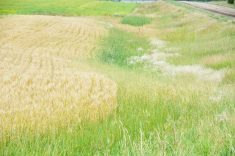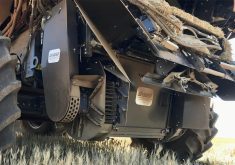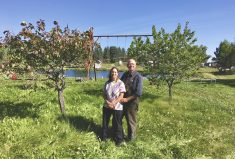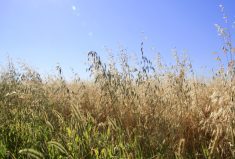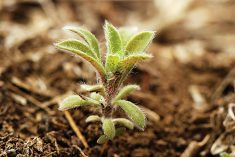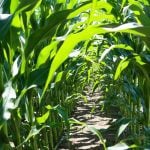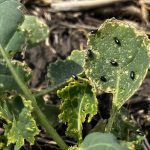Woolly burdock is found throughout Alberta and will grow in most soil types. It prefers moist, loamy, and well-drained soils which are in direct sunlight. This noxious weed is commonly found on disturbed sites, but has also been found growing in gardens for herbal use.
Woolly burdock can only reproduce by seed, but is self-fertile due to the flowers being hermaphroditic (having both male and female organs). A mature plant can produce anywhere from 6,000 to 16,000 seeds.
An easy way to identify this weed is by looking at its flowers, which are covered with spiny barbs and cobweb-like hairs. The flowers, which branch off and form round clusters, can range from rose, purple, to white in colour. The stems (light green, grooved with a purplish tinge) and leaves (heart shaped and alternating) also contain cobwebby or woolly-like hairs.
Read Also

New crop insurer policy enables easier startup for faba beans
Agriculture Financial Services Corporation updated its normals for faba beans, which may open the door for more Canadian producers to feel comfortable growing the pulse crop in the future.
Woolly burdock is similar to great burdock (which has larger flower heads) and lesser burdock (which has flower heads with sessile stems that don’t branch off as woolly burdock flowers do).
Because its flower heads are barbed, livestock won’t graze on woolly burdock. But if the barbs become entangled in an animal’s hair it will cause matting, and sometimes injury. By hitching a ride on animal hair or people’s clothing, weed seeds are easily dispersed.
Control of woolly burdock is achieved by digging up plants or cutting them prior to flowering. No current herbicides are registered for use on this weed.
For more information on this or any invasive plant, contact your local Agricultural Fieldman or the Alberta Invasive Species Council.
By Shaylin Exshaw, senior weed and pest inspector, Yellowhead County



